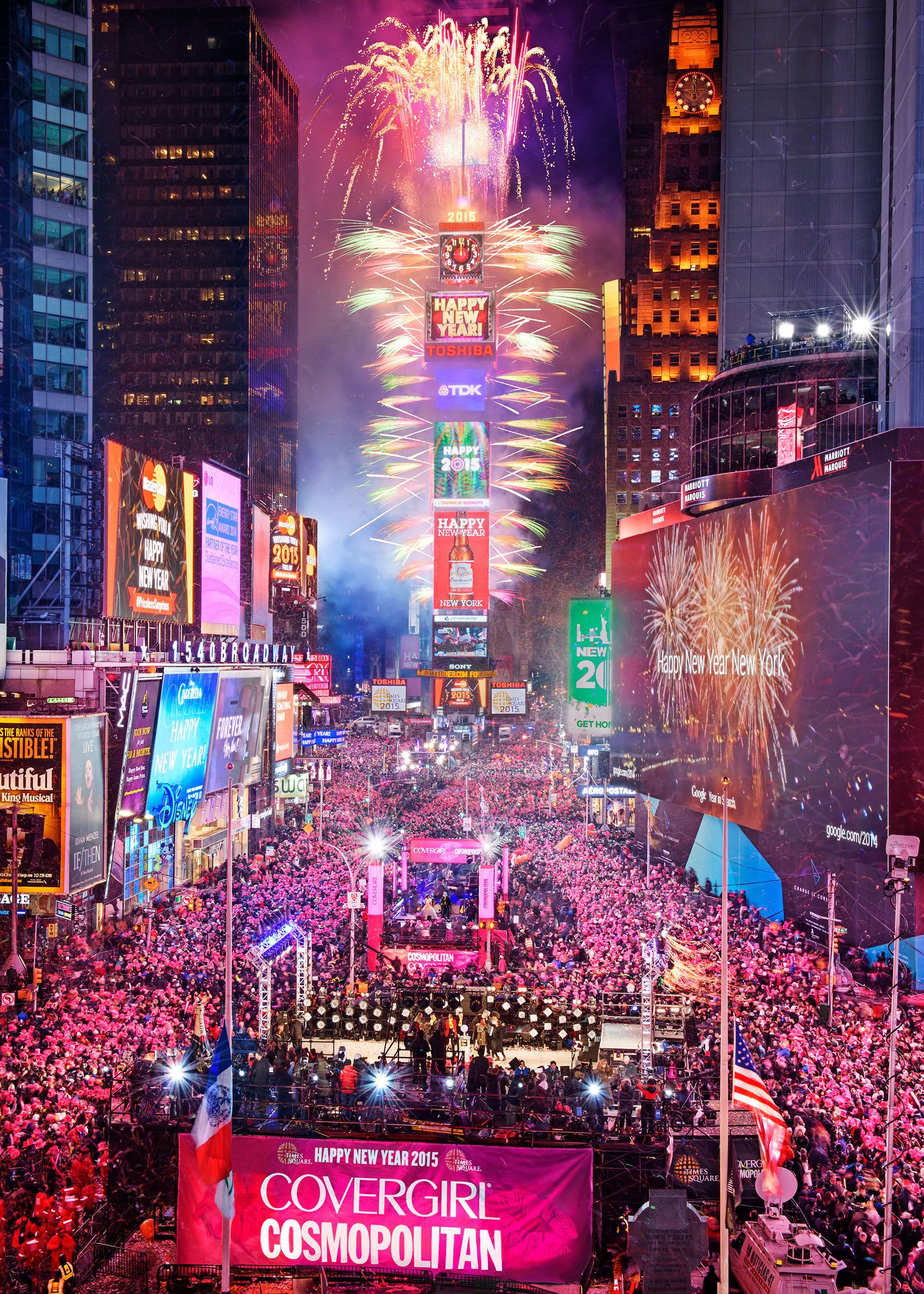Sea travel assistance
During the last 60 seconds of each year, all attention is focused on the five-tonne Waterford crystal ball, sparkling with more than 30,000 LED lights, which is released.
When the ball reaches the bottom of a specially designed flagpole, a champagne cork will pop. There will be cheers, toasts and kisses as people welcome the promise of a new year.
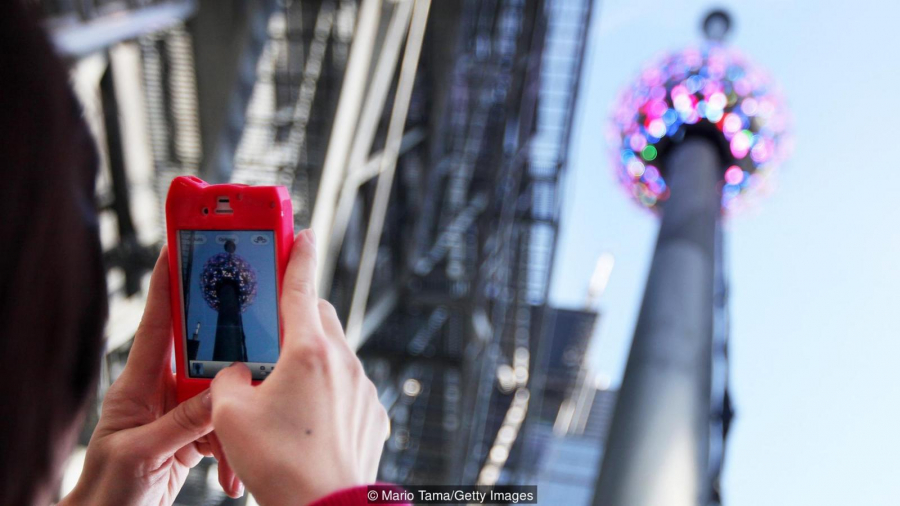
A Victorian invention inspired the New Year's Eve ball drop in Times Square
But few people know the man who truly deserves their praise, a deeply religious British Royal Navy officer named Robert Wauchope. Wauchope is credited with creating the time ball, the ingenious Victorian contraption that inspired the Times Square incident. His invention was inspired by seafaring, and aimed to make navigation safer.
In the early 19th century, knowing the exact time was crucial knowledge for sailors. Only by keeping their ship's clocks precisely calibrated could sailors calculate their longitude and navigate accurately across the oceans. Robert Wauchope's globe, first demonstrated in Portsmouth, England, in 1829, was a rudimentary broadcasting system, a way to relay the time to anyone who could see the signal.
Typically, at 12:55, a machine will lift a large painted ball up the middle of a pole or flagpole; at 12:58, it will reach the top; and at exactly 13:00, a worker will drop it down the pole. “It’s a clear signal,” says Andrew Jacob, who operates the time ball at the Sydney Observatory in Australia. “The sudden movement as it starts to fall is easy to see.”
Greenwich Globe
Before the invention of the time ball, ship captains would often go ashore and visit an observatory to check their watches against the official clock. They would then literally bring the time back to the ship. Wauchope’s invention allowed sailors to calibrate their ship’s clocks without leaving the ship.
“We’re so used to having the time here all the time and having ways of telling it, but that wasn’t always the case,” says Emily Akkermans, who holds the enviable title of “curator of time” at the Royal Observatory in Greenwich, London.
The museum and historical site here houses the world's oldest working time ball, which has been dropped daily since 1833, barring severe weather, war or technical failure.
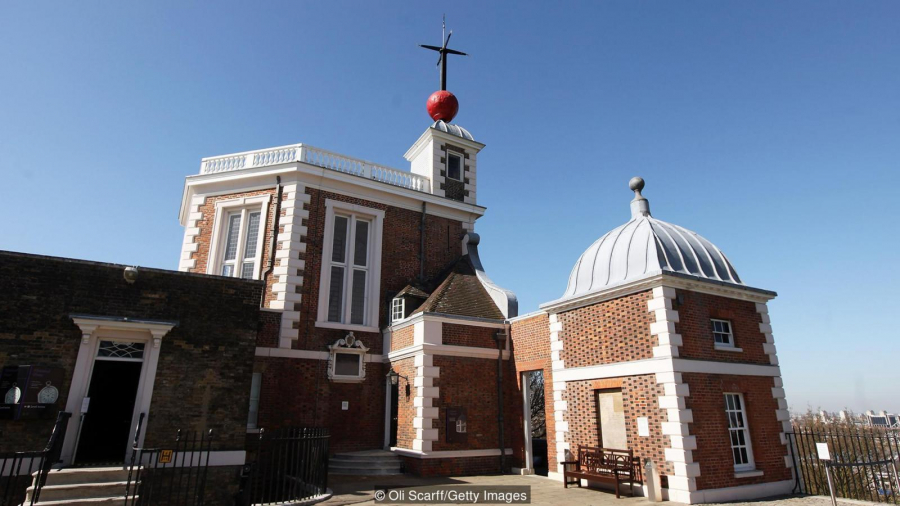
The Royal Observatory in Greenwich, London, is said to have the world's oldest time ball.
While noon might seem like a good time to signal, that was once rush hour for observatory astronomers, who had to track the position of the midday sun to set their clocks. Waiting another hour, until 13:00, would have been much less hectic.
Greenwich's ball has inspired hundreds of others around the world, from Jamaica to Japan. The balls are usually placed on a high point near a harbor, atop an observatory, lighthouse, or tower.
And in just under a century, these time-telling devices flourished. The idea even took off inland. “It wasn’t just for sailing,” Akkermans says. “Some time balls were operated by watch shop owners.” In Barbados, a 9:00 drop signaled the start of class for students across the island, she says, citing an 1888 article in the Illustrated London News. But today, only a few places still have working time balls.
Eighty miles from Greenwich, another time ball is dropped regularly at the coastal town of Deal, near where the English Channel meets the North Sea. This was the first tower to be connected to Greenwich by electricity, allowing it to relay Greenwich Observatory’s official time to sailors, although today it relies on signals from the British atomic clock. From April to September, the ball is dropped every hour between 9:00 and 17:00. And it also marks the New Year with a special midnight display on 31 December.
Other spheres
Jeremy Davies-Webb, chairman of the Deal Museum Trust, said he knew of four other operating time balls in addition to Greenwich, Deal and Sydney, although on any given day they were likely to be out of operation due to weather conditions or breakdown. The four balls are in Edinburgh, Melbourne, Christchurch and Gdansk.
Tube has visited all of them except the one in Melbourne, and is particularly fond of the one in Poland, which marks its drop with a trumpet blast. "We'd love to do it, but people near us would complain bitterly," he said.
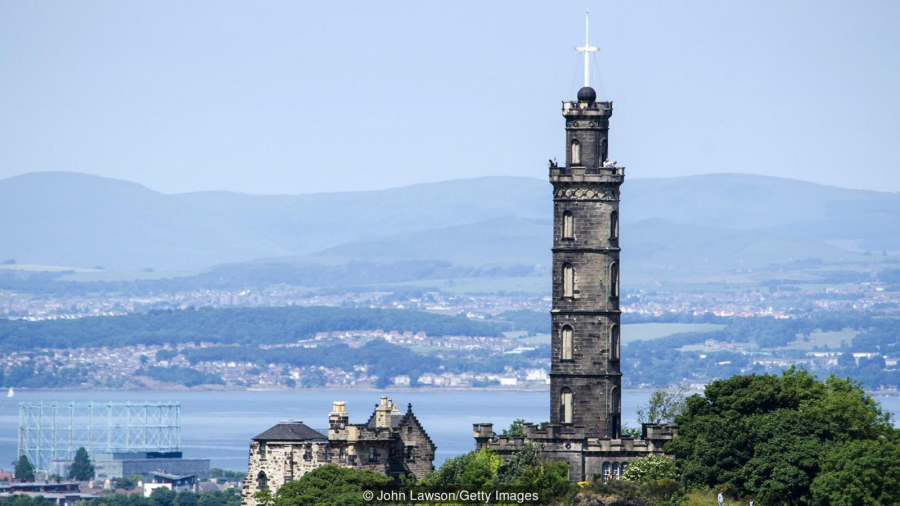
The time ball at Nelson's Monument allowed sailors to know the exact time while they were at sea.
Anna Rolls is curator of the Clock Museum in London and has worked on the Greenwich time ball for several years. “It’s a strange-looking thing,” she admits, an intricate mechanism that “does something so easily these days.” Yet it is precisely that, she suspects, that accounts for its appeal.
In fact, each working time ball has its own story.
The Greenwich Ball, which is about 1.5 metres in diameter and made of aluminium with a surface covered in dents, was the result of a misunderstanding. In 1958, staff at the observatory, apparently unaware that the ball had been taken down for temporary repairs, were seen kicking it around the observatory grounds in an informal game of football.
In Scotland, the time ball at Nelson Monument is overshadowed by the One O'Clock Gun fired from Edinburgh Castle. This gun was also intended to signal the time to ships, but was less accurate than the time ball because sound travels at a relatively slow speed of 1,235 km/h. This means it takes a few extra seconds for sailors to hear it.
In the Melbourne suburb of Williamstown, the time ball tower has gone through many roles. The square bluestone lighthouse at Point Gellibrand opened in 1849, just in time for the city’s gold rush, but was converted into a time ball a decade later. In 1926, the keeper, who had faithfully dropped the ball for 37 years, died, and with no complaints about the ball ceasing to drop, it was retired, according to the Australian Lighthouse Conservation Group. Recently, local charities restored the machinery, and the time ball is once again dropped daily.
In Lyttelton, New Zealand, the time ball tower collapsed after the 2011 Christchurch earthquake. But a fundraising campaign helped rebuild the magnificent stone structure, and ball drops resumed in November 2018. And it is said that German soldiers occupied the upper floors of the Gdansk tower in 1939, where they installed a machine gun and fired the first shots, starting World War II.
Other inactive time balls still sit atop buildings around the world, from the waterfront in Cape Town to the US Naval Observatory in Washington, DC.
New Year's Celebration
As for the New Year's connection, the story begins in 1907. The New York Times had arranged a New Year's Eve celebration in Times Square a few years earlier, marked by dynamite and fireworks. After authorities banned explosives, organizers needed something flashy to mark the new year and found inspiration in the famous Western Union Telegraph time ball, which had been operating on the roof of the company's Broadway headquarters since 1877.
The New York Times built an impressive 700-pound ball and covered it with 100 25-watt light bulbs. But in the spirit of showmanship, organizers changed the time ball protocol so that the defining moment was when the ball landed, not when it was dropped.

Millions of people flock to New York's Times Square to celebrate New Year's Eve every year.
The party trick was an immediate success. As the newspaper reported the next day: "The loud shouts that arose drowned out the whistles for a minute. The loudness of the revelers overwhelmed the horns, bells, and jingles. Above all was a tumult of human noise from which the faint words 'Hurrah for 1908' emerged."
The idea of marking the new year by dropping an oversized object at midnight has since spread around the world. Bermuda drops an illuminated onion. In the Canadian province of New Brunswick, it’s a maple leaf; and in Boise, Idaho, it’s a potato. But while the New Year’s Eve ritual is taking hold, the time ball is on the decline.
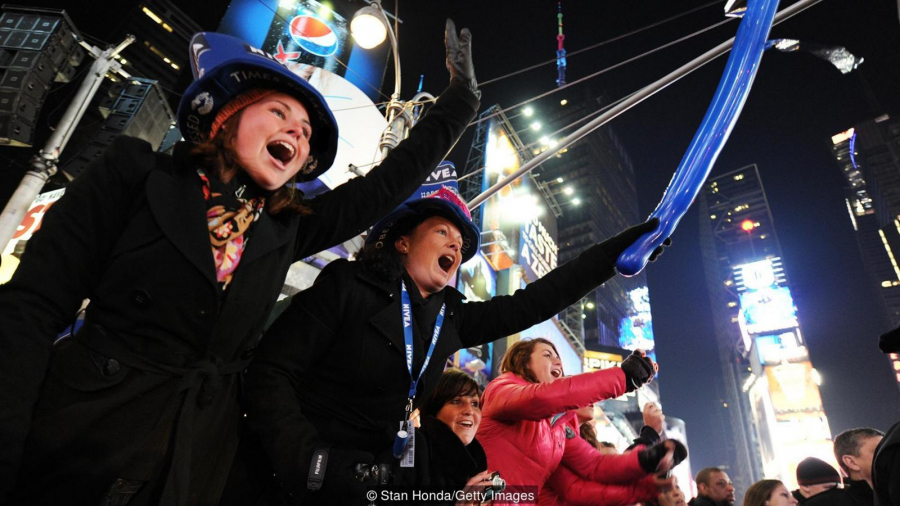
A New Year's Eve celebration in Times Square
By the 1920s, the technology was obsolete, quickly replaced by radio, quartz clocks, and now GPS. Most time ball towers have been demolished, and the iron mechanisms scrapped. “There’s no practical point in a time ball system now,” says Jacob of the Sydney Observatory, which once provided time for the state of New South Wales.
But the astronomer, who admits he often checks the time on his mobile phone, believes it's important to preserve this forgotten daily ritual. "Recreating it every day reminds us that things were much more complex and organized than we think. It was fundamental to the state, to commerce, to international trade," he says.
Nowadays, the only people who see the time ball are probably a few cruise ship passengers strolling in from Sydney Harbour and school groups on school trips.
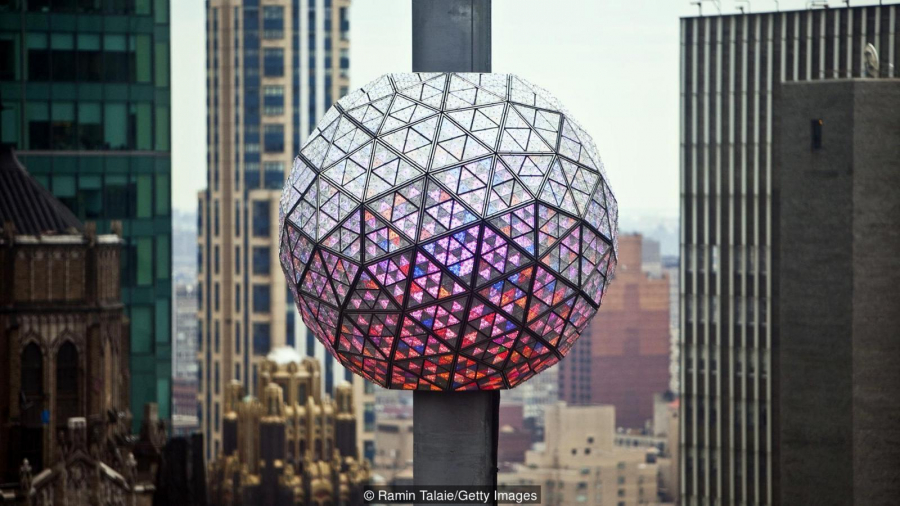
New York New Year's Eve Ball
Still, there's a certain thrill to dropping the ball to mark the hour. "It makes a whoosh and hits the bottom," he said. "It's fun."
And even if the time ball tower fails, the tradition still stands.
While Wauchope may have felt aversion to the boisterous celebration, come December 31 his invention will once again take the global stage, doing exactly what it was originally intended to do: marking the passage of time simply and accurately.





